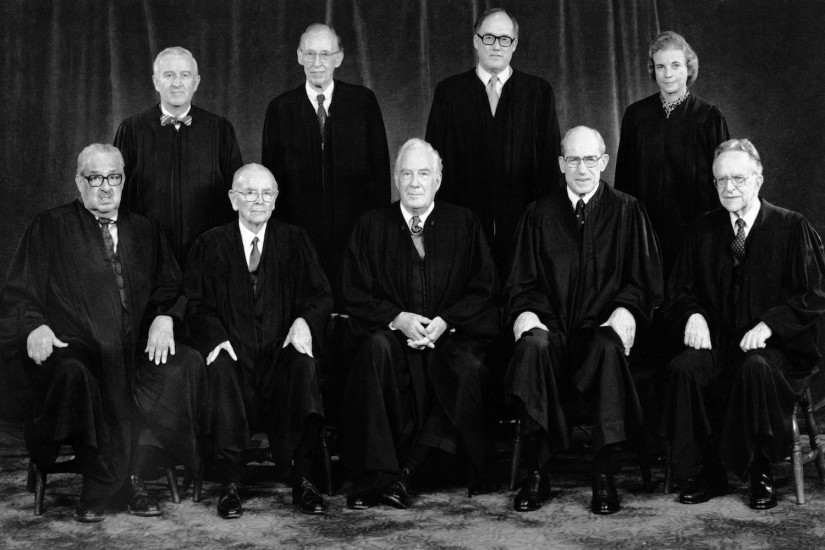Today, it is easy to see the conservative justices as part of a Republican apparatus: a right-wing legal movement, centered on the Federalist Society and running through the White House and the offices of key senators, that groomed Alito and Chief Justice John Roberts and is now in control of the Trump administration’s judicial appointments. But the roots of an anti-redistribution, market-protecting Constitution are older than today’s conservative legal movement. The Bosses’ Constitution emerged at the end of, and in reaction to, the three decades after World War II of widely shared growth and expanded social protections, with the flattest distributions of wealth and income the country had ever seen and a strong role for organized labor in managing and benefiting from the national economy. For the center-right, these decades of growing equality presented a threat: Wages, public spending, union power, and bureaucratic regulation were undermining profits and free enterprise. Economist-publicists like Friedrich Hayek and Milton Friedman argued vigorously for cutting back the power of unions and of government redistribution programs to preserve market discipline and the libertarian freedom to invest in businesses and to hire and fire workers. Business elites listened, along with a new generation of corporate lawyers, who have always been the single greatest power center in the legal profession.
In a 1971 memo to the US Chamber of Commerce, future Supreme Court Justice Lewis Powell—then a lawyer practicing corporate law in Virginia—captured the spirit of the decade’s libertarian turn. Favorably citing Friedman and calling on American business to make a full-court press for “the preservation of the system [of free enterprise] itself,” Powell adopted Hayek’s signature argument that “the threat to the enterprise system…also is a threat to individual freedom…. Freedom as a concept is indivisible. As the experience of the socialist and totalitarian states demonstrates, the contraction and denial of economic freedom is followed inevitably by governmental restrictions on other cherished rights.”
A few months later, Powell was nominated by Richard Nixon for a seat on the Supreme Court. In 1973, Powell wrote the opinion in which the Court ruled that there was no constitutional protection for the poor, and no violation of equal protection when school-funding schemes mandated wildly different levels of funding in rich and poor neighborhoods. In 1976, his fellow Nixon appointee Harry Blackmun wrote the first opinion using free speech to protect commercial advertising, setting up the Court’s later rulings protecting tobacco and pharmaceutical ads from regulation. (A prescient dissent by the hardheaded conservative justice William Rehnquist conjured up a dystopia of ads pitching drugs for pain and anxiety—exactly the world we live in now, in which drug companies have fueled the opioid crisis.)
The same year that the Court ruled that commercial advertising deserved constitutional protection as speech, it also issued a per curiam (unsigned) ruling in Buckley v. Valeo, which held that wealthy individuals, including candidates, could spend unlimited amounts on campaign ads, and that caps on total spending by political campaigns were also unconstitutional—a decision guaranteeing that wealth would translate directly into campaign speech. In 1978, Powell wrote the first opinion in which the Court subjected affirmative action to “strict scrutiny,” its most aggressive review, setting in motion the steady erosion of an imperfect but important tool for mitigating racial inequality. By the end of the decade, the Court had declared economic inequality to be constitutionally benign and commercial advertising to be protected speech, and it also ruled that the Constitution forbade many of the efforts to check economic power and racial inequality through policies like campaign-finance laws and affirmative action.
